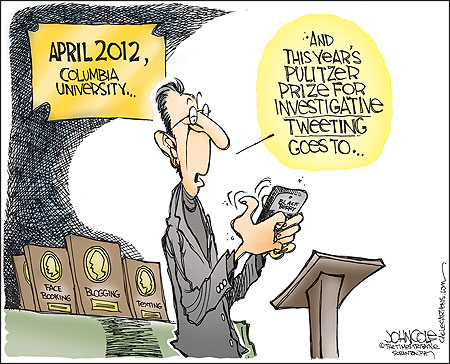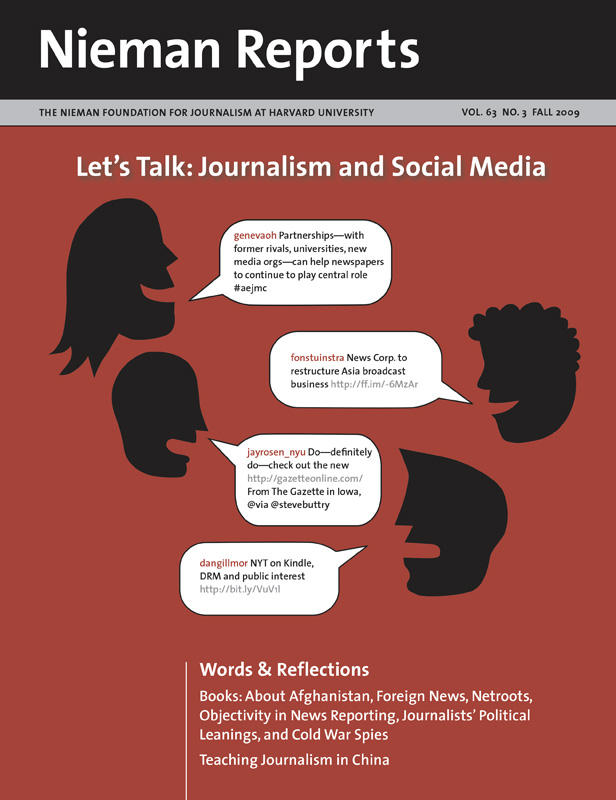
Cartoon courtesy of John Cole, The Times-Tribune, Scranton, Pennsylvania.
There are times when technological change catches up with an idea. Now is such a moment, as social media transform how people receive and share news and information. Just a few years back the notion of journalism being a conversation, not a lecture, wasn’t embraced widely in an industry content to transmit what reporters learned to audiences expected to consume it. Comfort with that notion grew as online comments and live chats assumed a role that Letters to the Editor once held on their own, albeit with greater anonymity and often less civility. Then, from the “audience” spilled forth blogs and photos, videos and tweets. Soon, the words “citizen” and “journalist” were joined in a marriage brokered by technology and nurtured by convenience as news organizations shed staff yet still needed to produce “content.”
With talking and sharing so much a part of the Web’s ethos, it’s the job of journalists to adapt. This means using these social media tools in ways that add value to what they do. In some newsrooms, it’s a try-everything-see-what-works approach. In others, there’s a more deliberate strategy: Specific tools are employed to reach different goals. With each method, the most effective schooling usually comes from outside the newsroom. In recounting the social media learning curve at NewWest.Net, Editor Courtney Lowery writes: “When we turned off the Twitter link to the Facebook page, one of our readers wrote: ‘tweets are not fb status posts. glad you got it.’ Loud and clear.”
Examples abound in our collection of stories about ways journalists are using social media to interact with sources and consumers. Cautionary flags get raised in our multifaceted exploration of emerging ethical issues and how credibility is earned on the Web. As he illuminates key principles for digital media literacy, “We the Media” author Dan Gillmor asserts that “we’ll need to transform ourselves from passive consumers of media into active users. And to accomplish that, we’ll have to instill throughout our society principles that add up to critical thinking and honorable behavior.”
Social media can bring greater depth and breadth to journalists’ work. What’s curious, however, is how seldom the word “journalism” seems to surface in the numerous forums about digital media. In her Nieman Reports’ essay, Geneva Overholser, director of the University of Southern California’s Annenberg School of Journalism, observed this dynamic at her school’s “Beyond Broadcast 09” conference in June. “Never in the three days we were together did I once hear the word ‘journalism’ mentioned,” she writes. [While its] “values and practices might be evident, the term itself is absent.” In this issue, the term is present, experiences are shared, and intersections of social media and journalism emerge.



